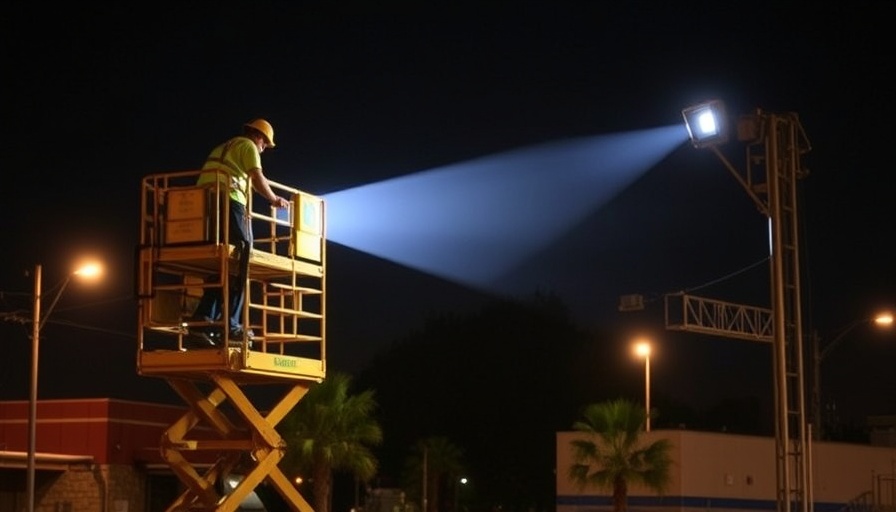
Why Safety Practices Matter in Elevated Work Environments
The construction and communications industry is witnessing an increasing reliance on mobile elevated work platforms (MEWPs) like bucket trucks and aerial lifts, particularly among communication tower workers. This evolution in equipment usage underscores a vital point: safety must always come first. As highlighted in NATE's Climber Connection series, comprehensive training and diligent pre-work inspections are not just recommended practices; they are essential to prevent accidents that could lead to serious injuries or fatalities.
Understanding the Risks
Communication tower workers are particularly vulnerable to accidents due to their work environment. High-altitude tasks are risky, and potential hazards include overhead power lines and unstable surfaces. Cameron Swanson, a leader in workplace safety, emphasizes the importance of proper training to recognize and mitigate these risks. Workers must remain vigilant about their surroundings, ensuring that they have established safe distances from potential hazards. By prioritizing situational awareness, workers can avoid catastrophic errors.
Best Practices for Operating Mobile Elevated Work Platforms
Using MEWPs effectively requires a stringent adherence to safety protocols. Here are some best practices distilled from Swanson's guidance:
- Secure fall protection to an engineered anchor point—never rely on handrails.
- Conduct thorough pre-operation inspections of equipment to catch any potential issues early.
- Be mindful of your load; never exceed the weight limit and secure all transported items.
- Regularly review safety procedures outlined in the equipment manual to avoid complacency and ensure the safety of both the operator and team members.
This systematic approach not only protects the workforce but also enhances overall productivity, creating a safer working environment for everyone involved.
The Role of Training and Awareness
One of the most critical insights is that complacency is often the biggest challenge faced by workers at height. As Swanson points out, it's crucial that workers remain engaged and aware throughout their tasks. Training sessions should not only be a formality but also a continuous process that fosters an understanding of the dangers present in elevated work environments.
Real-World Impact
Failing to adhere to safety protocols can have dire consequences—both human and financial. In addition to the ethical responsibility to ensure worker safety, companies that experience workplace accidents may face significant financial repercussions, including medical costs, legal fees, and insurance claims. By implementing robust safety measures, firms can protect employees and reduce potential liabilities.
Conclusion and a Call to Action
The video featuring Swanson is a timely reminder of the critical need for safe work practices in the construction industry, specifically for communication tower workers. By emphasizing training, awareness, and adherence to safety best practices, we can work towards a safer professional environment. Let's make workplace safety a priority and consider how these insights could enhance safety protocols in your own organization.
 Add Row
Add Row  Add
Add 




Write A Comment